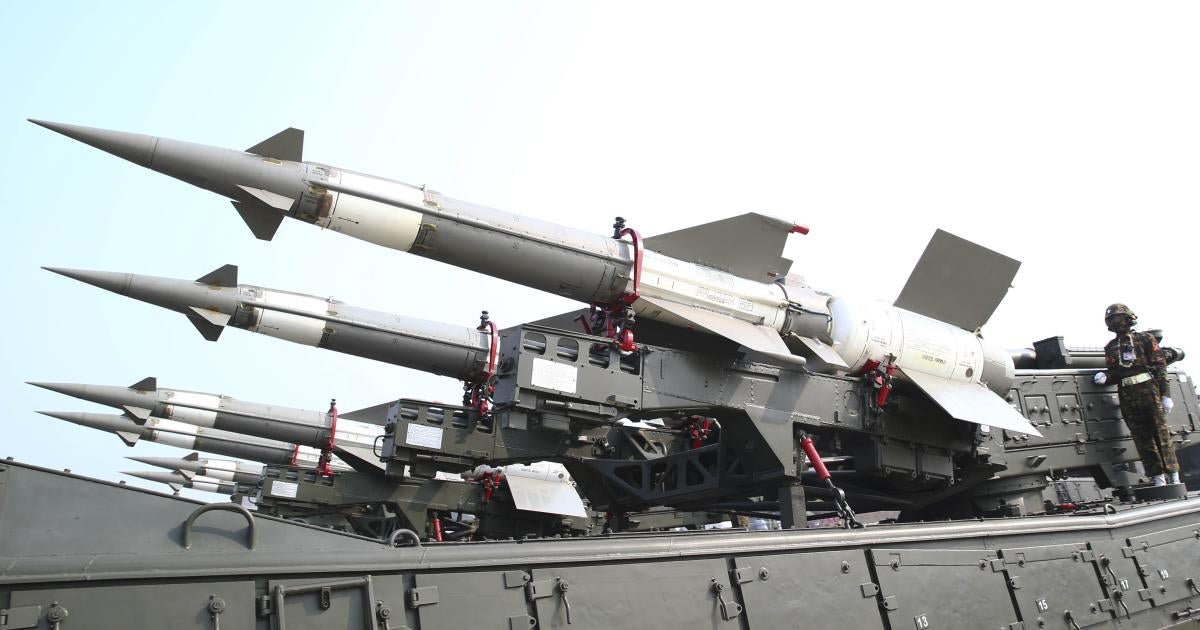(Sydney) – The Myanmar military used a “thermobaric” munition for an attack on an opposition building in Sagaing Region on April 11, 2023, that killed more than 160 people, including children, Human Rights Watch said today.
The airstrike using an “enhanced-blast” type munition on the village of Pa Zi Gyi in upper Myanmar caused indiscriminate and disproportionate civilian casualties in violation of international humanitarian law, and was an apparent war crime. Foreign governments should prevent funding, arms, and aviation fuel from going to Myanmar’s military, which continues to commit serous abuses with impunity.
“The Myanmar military’s use of a weapon designed to cause maximum deaths on an area crowded with civilians shows flagrant disregard for human life,” said Elaine Pearson, Asia director at Human Rights Watch. “Foreign governments need to cut off the junta’s funding, arms and jet fuel to deter further atrocities.”
About 300 residents from Kantbalu township gathered on April 11, ahead of the Buddhist new year to open an opposition-controlled administrative office in Pa Zi Gyi. Two witnesses told Human Rights Watch that at about 7:30 a.m., a military jet flew overhead and dropped at least one munition, which exploded amid the crowd gathering around the building. Within minutes, a witness said, a helicopter gunship followed and fired cannons, grenades, and rockets into the crowd as people tried to flee.
A resident of Pa Zi Gyi said that members of the People’s Defense Forces (PDF), an anti-junta militia, were at the opening. The office was intended for civilian uses such as filing taxes, township meetings, and judicial processes. The witness said the PDF stored goods, funds, and medicines in the office, but also some ammunition.
“The event agenda had meetings, entertainment, and awards ceremonies,” the witness said. “There were many scouts and guards for security, but they were mainly concerned about possible junta military convoys on the road and not so much about airstrikes, so were taken by surprise.” He said some of his family members including a child were killed in the attack.
A second witness said, “I got there early, and I was standing outside the building when the attack started so I had a chance to run for cover.” He said he jumped into a trench just as a munition detonated near the building. “The first strike was by [a jet plane] that killed everyone inside and destroyed the building. But the subsequent strafing by [a helicopter] that came afterward … attack[ed] and kill[ed] the survivors who were running for their lives into the nearby forest.”
Human Rights Watch reviewed 59 photos of the victims’ bodies and a video of the site following the attacks, and concluded that the initial strike was conducted with a large, air-dropped “enhanced-blast” type munition. This type of weapon is often called “thermobaric” or a “vapor-cloud explosive.” Although enhanced-blast weapons can be used in several ways, they generally function on the same principle: an explosive material is dispersed as a vapor cloud that uses atmospheric oxygen as a fuel when it is detonated. The scale of the blast and thermal damage to the building, as well as the profound nature of the burns and evident soft-tissue and crushing injuries suffered by the victims, are distinctive.
Enhanced-blast weapons are more powerful than conventional high-explosive munitions of comparable size and inflict extensive damage over a wide area, and thus are prone to indiscriminate use when used in populated areas, Human Rights Watch said.
Human Rights Watch also reviewed eight photographs and two videos of the remnants of the weapons posted online and that the opposition National Unity Government (NUG) presented during a news conference on April 14. Human Rights Watch could not positively identify all of the remnants. However, some were consistent with the types of weapons and munitions used by the type of helicopter gunship, an Mi-35, deployed by Myanmar’s military.
On state media on the evening of April 11, the Myanmar military claimed responsibility for the airstrikes. A military spokesman, Zaw Min Tun, said that they targeted People’s Defense Force members and that the casualties were a result of the strikes hitting PDF storage units for explosives and landmines, which then exploded.
The National Unity Government said those killed were mainly civilian residents of Pa Zi Gyi, including 40 children. The youngest victim was 6 months old and the oldest was 76. As of May 5, the NUG said a total 168 people had been killed in the attack. Human Rights Watch was not able to confirm those figures.
International humanitarian law applicable to the non-international armed conflicts in Myanmar obligates all warring forces to distinguish between combatants and civilians and to ensure that the targets of attacks are military objectives and not civilians or civilian objects. Both sides are required to take all feasible precautions to avoid and minimize civilian loss of life and property, and, where circumstance permit, provide effective advance warnings of attacks.
The laws of war prohibit indiscriminate attacks, which include using methods or means of combat that cannot be limited in ways that minimize incidental loss of civilian life and damage to civilian objects. Attacks that can be expected to cause disproportionate civilian harm in relation to the concrete and direct military advantage anticipated in the attack are also prohibited.
The presence of opposition combatants and ammunition would make the building a legitimate military objective subject to attack. Even so, the use of an enhanced-blast weapon for the attack was unlawfully indiscriminate because its use in a crowded civilian area could not minimize the loss of civilian life. In addition, the initial strike and ensuing attacks on hundreds of fleeing civilians was almost certainly an unlawfully disproportionate attack, and possibly a deliberate attack on civilians.
Serious violations of international humanitarian law that are committed with criminal intent – that is, deliberately or recklessly – are war crimes. War crimes include deliberate, indiscriminate, and disproportionate attacks against civilians, and a wide array of other crimes. Individuals also may be held criminally liable for attempting to commit a war crime, as well as assisting in, facilitating, aiding, or abetting a war crime. Commanders who knew or should have known about abuses by their forces and failed to take appropriate action may be held liable as a matter of command responsibility.
Recent attacks in which Myanmar’s military may be responsible for laws-of-war violations include airstrikes on April 10 in Chin State that killed nine civilians and in Bago Region on May 2 that killed three civilians. An air and ground assault in Magway Region on April 21 burned a Japan-funded hospital. And in March, after the military captured a town in Shan State, 22 people were summarily executed, with many of the victims bearing marks of torture.
The Association of Southeast Asian Nations (ASEAN) should at its next meeting in Indonesia from May 9-11 signal its support for stronger measures to cut off the military’s cash flow and press the junta for reform.
The United Nations Security Council should follow up on its December resolution on Myanmar and its March follow-up briefing by urgently considering a new resolution to deter the military from committing further abuses, including adopting an arms embargo, referring Myanmar to the International Criminal Court, and imposing targeted sanctions on junta leadership and military-owned companies.
“The Myanmar junta’s abusive military operations depend on its ability to purchase weapons and materiel,” Pearson said. “ASEAN and the UN Security Council both need to reconsider their toothless approaches to Myanmar’s junta and take stronger measures.”



